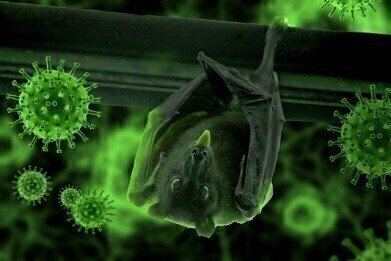Laboratory Products
Bat Coronavirus Study Finds Closest Relative to SARS-Cov-2
Jul 05 2020
In the latest attempt to find out more about the origins of SARS-CoV-2, a team of researchers from non-governmental organisation EcoHealth Alliance has published one of the most comprehensive analyses of bat coronaviruses in existence. While multimillion-dollar funding was recently cut by the US National Institutes of Health (NIH), the researchers did manage to map the genetic sequences of more than 780 bat coronaviruses found in China. Of these, more than 33% have never been explored and could offer valuable new insight into the origins of COVID-19.
Study pinpoints Rhinolophus genus
The study suggests the Rhinolophus genus of bat played a key role in the evolution of coronaviruses in general, and potentially the SARS-CoV-2 strain. Also called Chinese horseshoe bats, the Rhinolophidae family has been identified as a major carrier of coronaviruses.
“It seems that by sheer phylogeographic, historical, evolutionary bad luck, Rhinolophus ends up being the major reservoir for SARS [severe acute respiratory syndrome]-related coronaviruses,” explains Peter Daszak, co-author of the study and president of EcoHealth Alliance.
Creating a coronavirus “family tree”
Co-author of the study and bat researcher at the Wuhan Institute of Virology Shi Zheng-Li says that between 2010 and 2015, hundreds of bats were captured and swabbed. This allowed the team to extract RNA, sequence short genome segments and create a “family tree” of coronaviruses carried by bats. Of all the genera, a coronavirus found in Rhinolophus bats shared 96.2% of sequencing seen in the SARS-CoV-2 strain.
While useful, the study doesn’t necessarily confirm the concept Rhinolophus bats are responsible for the COVID-19 pandemic. Computer modelling suggests it would take decades for the existing Rhinolophus strain to mutate into the SARS-CoV-2 strain that’s infected around 10 million people around the world. It also doesn’t sanction the theory that SARS-CoV-2 is the result of a bat virus jumping into another host, then mutating into a strain that infects humans.
Calls for “wider sampling of wildlife species”
According to University of Sydney evolutionary biologist Edward Holmes, the study does confirm the “huge diversity” of Chinese bat coronaviruses with the potential to hop from one species to another. Moving forward, health experts are calling on the NIH to reinstate funding for the study to learn more about bat coronaviruses in China and their capabilities.
“While bats are clearly major hosts for coronaviruses, until we have a wider sampling of wildlife species we will not be able to fully resolve the evolutionary events involved in the genesis of SARS-CoV-2, particularly whether it jumped straight from bats to humans or went through an intermediate host,” says Holmes.
To find out more about how scientists are working to map the evolution of SARS-CoV-2 and understand the strain, don’t miss ‘Getting a grip on Covid-19 test samples’ with insight from Neil Benn MSc & Stephen Knight MA on behalf of Ziath Ltd.
Digital Edition
Lab Asia 31.2 April 2024
April 2024
In This Edition Chromatography Articles - Approaches to troubleshooting an SPE method for the analysis of oligonucleotides (pt i) - High-precision liquid flow processes demand full fluidic c...
View all digital editions
Events
Apr 22 2024 Marrakech, Morroco
Making Pharmaceuticals Exhibition & Conference
Apr 23 2024 Coventry, UK
Apr 23 2024 Kintex, South Korea
Apr 23 2024 Seoul, South Korea
Apr 24 2024 Jakarta, Indonesia

.jpg)


.jpg)













